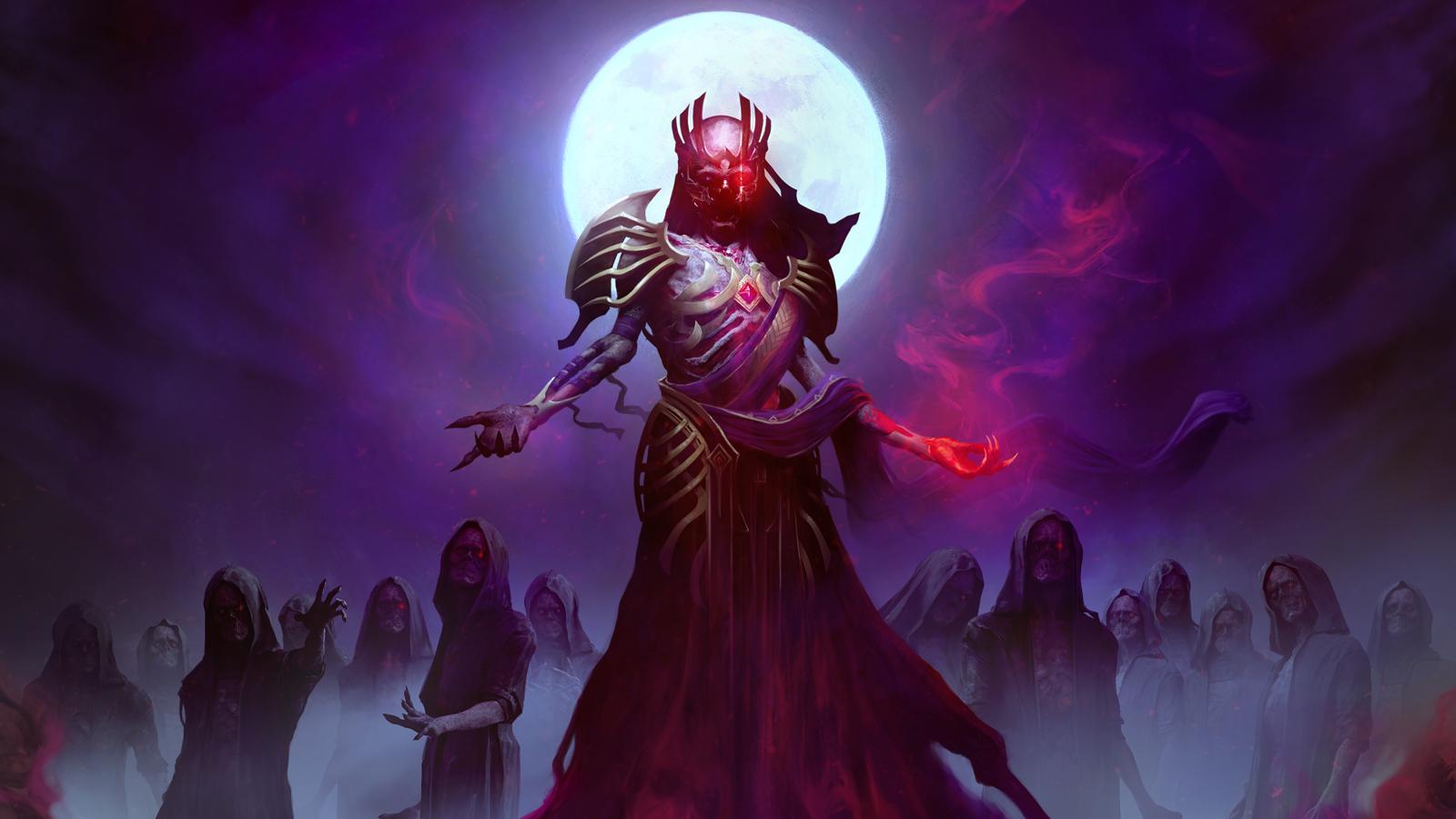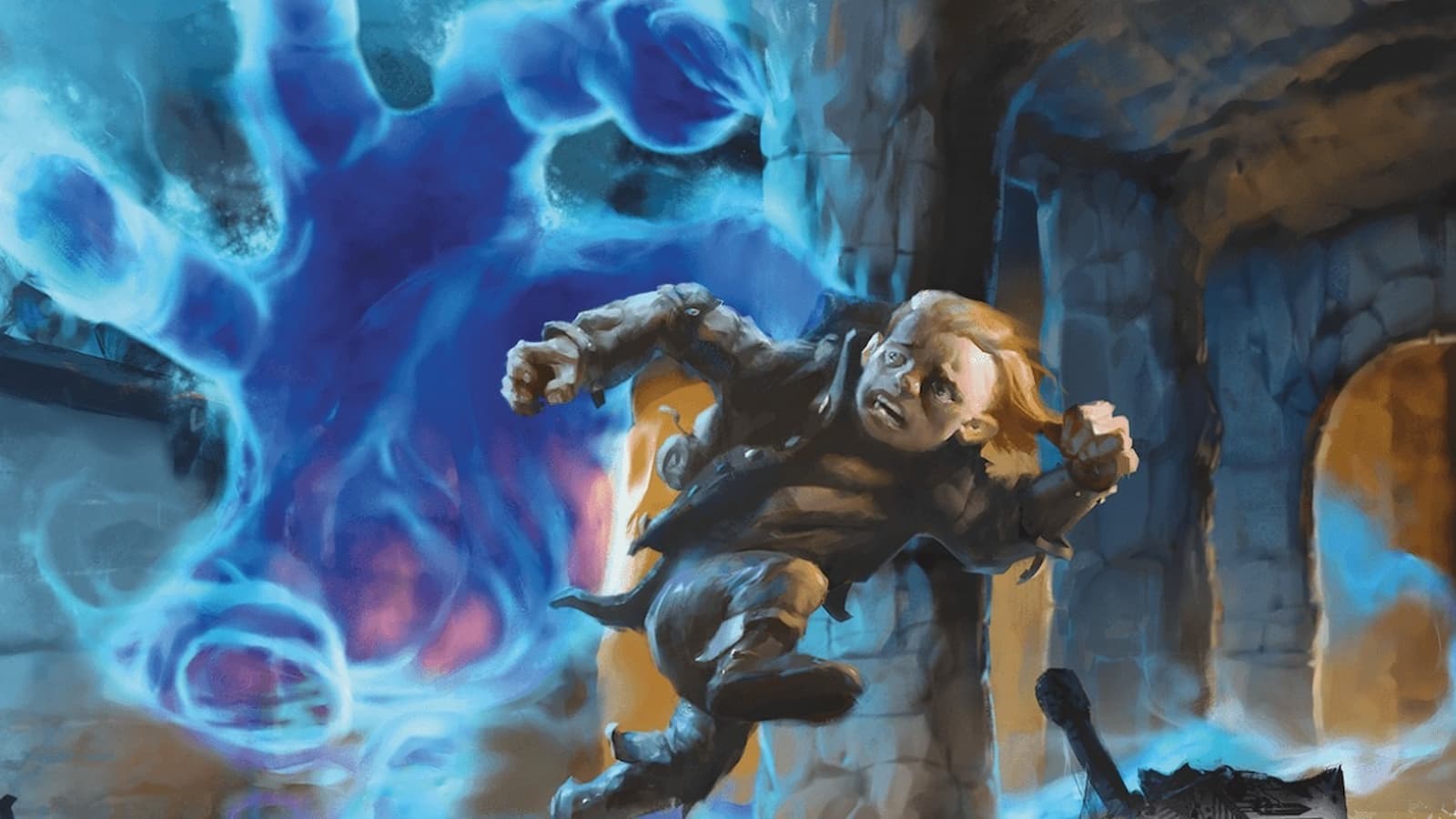D&D 5e Cleric Guide: Best options for caster & healer builds
 Wizards of the Coast
Wizards of the CoastWith their superior healing abilities and the power of a deity on their side, Clerics are a great fit for any Dungeons & Dragons party. Here’s what to know about building one in D&D 5e.
Like in other fantasy settings, Dungeons & Dragons‘ Cleric class is synonymous with healing. However, that doesn’t tell the full story.
Though they do serve as the best healers in the game, Clerics are far more versatile than you’d expect thanks to their many subclasses, or Divine Domains. These allow players to build their Clerics to serve whatever role their party needs.
Here’s what you should know about building a Cleric in D&D 5e.
Best Race options for Clerics in D&D 5e
 Wizards of the Coast
Wizards of the CoastIt’s worth mentioning that 2020’s Tasha’s Cauldron of Everything makes racial choices less important to builds than they originally were. Those using Tasha’s rules can choose where to assign their ability score bonuses rather than having them predetermined.
Even with that change, though, races come with features and abilities that can enhance a build, so whether you’re using Tasha’s rules or not, some Player’s Handbook races make for better Bards.
Hill Dwarf
Of the Player’s Handbook races, the Dwarf is the best option for Cleric builds, specifically the Hill Dwarf subrace. In addition to the +2 to Constitution all Dwarves get (which benefits any build), Hill Dwarves get +1 to their Wisdom, the Cleric’s key stat. On top of that, you’ll also get resistance to Poison damage, darkvision, and additional weapon proficiencies.
Human
It’s hard to go wrong picking a Human. The most versatile race, Variant Humans are great for two reasons: you get to pick two abilities score to add a +1 to, and you get a free feat. Put those boosts into Wisdom and Consitution and pick a feat like War Caster, Resilient, or Lucky to get off to a strong start.
Half-Elf
Another good option for Clerics is the Half-Elf, as they get +2 to Charisma and +1 to two other ability scores (you’ll want to put those into WIS and CON). Charisma isn’t essential for Clerics, but if your character is going to be the party’s face, that bonus will help. Half-Elves also get two skill proficiencies of their choice, so consider Intimidation and Persuasion, Charisma-based skills that Clerics don’t usually get.
Cleric Hit Dice
Hit dice determine how many hit points you gain when leveling up and how much you can heal during a short rest. This essentially makes classes more or less resilient in battle. Clerics get a d8 for their hit die, which makes them pretty average.
Cleric ability scores and saving throws
Here’s the order in which you should prioritize your ability scores for a Cleric build:
- Wisdom
- Constitution
- Dexterity
- Charisma
- Intelligence
- Strength
Note that if you plan to put your Cleric in heavy armor, you’ll want to swap Dexterity and Strength.
Regardless of what kind of Cleric you build, Wisdom should be your first priority, as your spells depend on it.
After that, Constitution is particularly helpful for casters. While all characters benefit from Constituon’s impact on HP, Clerics will likely be rolling a lot of CON saves to maintain concentration on their spells.
How important Dexterity is depends on your build. If your Cleric is going to wear Light Armor, then you’ll want more DEX for the AC bonus and weapon attacks. Medium Armor limits how much of an AC boost you’ll get from armor, so you don’t need more than 14. Finally, heavy armor Clerics can dump DEX, as it’s not useful.
Charisma and Intelligence are more circumstantial for Clerics. If you’re playing, say, a Knowledge Cleric, you’ll want a little more Intelligence, and if you’re going to be your party’s face, invest some more in Charisma.
Finally, Clerics can usually dump Strength, though a heavy armor build needs a bit to avoid a speed penalty.
Cleric starting skills and proficiencies
Clerics get the following proficiencies:
- Light and medium armor
- Shields
- Simple weapons
- Wisdom and Charisma saving throws
You can also choose two skills to be Proficient in out of the following:
- History
- Insight
- Medicine
- Persuasion
- Religion
Cleric class features
 Wizards of the Coast
Wizards of the CoastClerics are the best healers in DnD
Clerics are best known for their healing abilities, and for good reason. Out of all the D&D 5e classes, Clerics get the best healing spells in the game and a good number of spell slots for casting them. They can also change what spells they have prepared each time they finish a long rest, allowing them to switch things up based on what the party needs.
Channel Divinity gives subclass-specific benefits
Upon reaching level 2, Clerics gain Channel Divinity, allowing them to use their deity’s energy to fuel a magical effect. This starts with two effects, Turn Undead and a second dependent on subclass. While you start out only able to use Channel Divinity once per short or long rest, this increases to two uses at level 6 and three at level 18.
Turn Undead forces Undead within 30ft to make a Wisdom save that, if failed, means the creature must try to move away from you for a minute or until they take damage. This improves at level 5 with Destroy Undead, which instantly kills any Undead under a certain challenge rating who fails the throw. The CR starts at 1/2 or lower and increases as you level up.
High-level Clerics can ask their deity to help
Starting at level 10, Clerics can use Divine Intervention to call upon their deity for help. To do so, the Cleric must describe what they want and roll a d100. If the roll is equal to or lower than your Cleric level, the deity intervenes, with the DM determining what exactly happens.
If successful, you cannot use Divine Intervention again for seven days. If not, you’ll be able to try again after a long rest. Upon reaching level 20, Divine Intervention will automatically succeed.
Cleric subclasses

The Cleric subclasses, called “Divine Domains,” included in the Player’s Handbook are detailed below. Supplemental sourcebooks like Xanathar’s Guide to Everything, Tasha’s Cauldron of Everything, and Critical Role‘s Tal’Dorei Campaign Setting Reborn add even more subclass options.
Unlike many 5e classes, Clerics select their Divine Domain at level 1. This is because the Cleric’s subclass relates to what deity they serve and what aspect of that god they focus on.
Knowledge
Knowledge Domain Clerics share some similarities with Wizards, as both value learning. These Clerics get extra skill proficiencies, and their spell list includes mainly Divination and Enchantment options.
Their Channel Divinity options are Knowledge of the Ages, which gives temporary proficiency in the skill or tool of their choice, and Read Thoughts, which gives access to a creature’s mind if they fail a Wisdom save.
Life
Clerics of the Life Domain are the best healers in D&D. They get spells like Cure Wounds, Beacon of Hope, and Death Ward to heal and protect their companions in and out of battle. Plus, class features like Disciple of Life make their healing magic even more effective, and from 6th level on, they’ll heal themselves when casting a healing spell on another.
The Life Clerics can also get the Channel Divinity option Preserve Life. This allows a character to restore an amount of HP to their party equal to their Cleric level times five. That can be split among creatures within 30ft of the Cleric, though no character can be healed to over half either max HP.
Light
The Light Domain is, unsurprisingly, all about the ideals associated with light, such as renewal and truth. These Clerics get plenty of spells that deal fire and radiant damage, such as Burning Hands and Guardian of Faith.
Their exclusive Channel Divinity option is Radiance of the Dawn. This allows Light Clerics to dispell magical darkness within 30ft of themselves and forces hostile creatures to make a CON saving throw to avoid taking full radiant damage. They still take half damage on a successful save.
Nature
Nature Clerics have a lot in common with Druids, even getting to choose a Druid cantrip. Where they differ is that while Druids revere nature, Nature Clerics serve a specific god. Their spell list includes Druid and Ranger staples like Speak with Animals, Barkskin, and Tree Stride.
Their Channel Divinity is Charm Animals and Plants, which makes these creatures temporarily friendly.
Tempest
Tempest Clerics serve gods like Talos, Zeus and Thor – deities known for their power over storms, skies, and seas. They get bonus proficiencies with martial weapons and heavy armor, making them more durable than most other casters, and access to spells like Thunderwave, Call Lightning, and Control Water.
This power is reflected in Destructive Wrath, the Tempest Cleric’s Channel Divinity. This allows these holy warriors to deal maximum damage with lightning or thunder damage rather than rolling.
Trickery
True to their name, Trickery Domain Clerics follow gods of mischief like Loki. They wreak havoc, though with stealth and illusions rather than outright confrontation. Their spell list includes Disguise Self, Dispel Magic, and Modify Memory – all options that can really throw a wrench in their opponent’s plans.
Trickery Clerics also get two additional Channel Divinity options in Invoke Duplicity and Cloak of Shadows. The former allows the Cleric to create an illusory duplicate of themself that lasts for a minute or until losing concentration. The illusion can be moved within 120 ft and can be used for spellcasting. Cloak of Shadows allows the user to go invisible until either the end of their next turn or when they attack or cast a spell.
War
Gods of war take many forms, with different ones valuing things like honor, destruction and conquest, but regardless, War Clerics are made for the battlefield. Like Tempest Clerics, they get proficiency with martial weapons and heavy armor. Spells like Shield of Faith, Spiritual Weapon, and Crusader’s Mantle help them deal damage in combat while also protecting and inspiring their allies.
War Clerics get two extra Channel Divinity options: Guided Strike and War God’s Blessing. Guided Strike allows the Cleric to add +10 to an attack roll, while War God’s Blessing lets them give the same to a creature within 30 ft of them.
Best Cleric spells per level
 Wizards of the Coast
Wizards of the CoastClerics get quite a few spells from their subclass, but there are still plenty that all have access to. The ability to prepare spells after a long rest also provides additional flexibility for trying out different ones.
Here are our picks for the best Cleric spells from the Player’s Handbook.
| Spell Level | Best Spell options |
|---|---|
| Cantrip | Guidance, Light, Prestidigitation, Sacred Flame |
| 1st Level | Bless, Create or Destroy Water, Cure Wounds, Detect Magic, Guiding Bolt, Healing Word, Inflict Wounds, Sanctuary, Shield of Faith |
| 2nd Level | Aid, Augury, Calm Emotions, Continual Flame, Enhance Ability, Lesser Restoration, Silence, Spiritual Weapon |
| 3rd Level | Bestow Curse, Clairvoyance, Dispel Magic, Mass Healing Word, Protection from Energy, Revivify, Sending, Speak with Dead, Spirit Guardians, Tongues |
| 4th Level | Banishment, Death Ward, Divination, Stone Shape |
| 5th Level | Commune, Contagion, Greater Restoration, Mass Cure Wounds, Planar Binding, Scrying |
| 6th Level | Blade Barrier, Heal, Heroes’ Feast, True Seeing, Word of Recall |
| 7th Level | Divine Word, Etherealness, Plane Shift, Resurrection |
| 8th Level | Antimagic Field, Holy Aura |
| 9th Level | Mass Heal, True Resurrection |
For more on D&D 5e, check out our other guides below:
All D&D 5e books | Everything upcoming in D&D 2024 | D&D vs. Pathfinder | D&D 5e Multiclass Guide | Barbarian | Bard | Fighter | Paladin | Ranger | Rogue | Sorcerer | Wizard
If you click on a product link on this page, we may earn a small affiliate commission.



